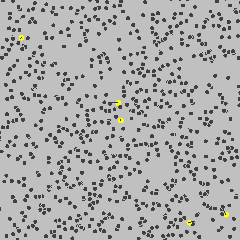Difference between revisions of "Brownian Motion"
| Line 4: | Line 4: | ||
===About Brownian Motion=== | ===About Brownian Motion=== | ||
| − | : Brownian Motion is [[Scientific Evidence| | + | : Brownian Motion is [[Scientific Evidence|evidence]] of the [[Particle Model|particle model]] of [[matter]]. |
| − | : When viewed under a [[microscope]] small [[object]s like a [[pollen]] grain or tea leaf seem to change direction randomly. | + | : When viewed under a [[microscope]] small [[object]]s like a [[pollen]] grain or tea leaf seem to change direction randomly. |
| − | : [[Brownian Motion]] can be [[explain]]ed if the small [[object]]s are being hit by other, even smaller [[object]]s that cannot be seen. This is [[Scientific Evidence| | + | : [[Brownian Motion]] can be [[explain]]ed if the small [[object]]s are being hit by other, even smaller [[object]]s that cannot be seen. This is [[Scientific Evidence|evidence]] that [[matter]] is made of [[particle]]s. |
{| class="wikitable" | {| class="wikitable" | ||
|- | |- | ||
Revision as of 08:43, 22 March 2019
Key Stage 3
Meaning
Brownian Motion is the seemingly random movement of very small, visible, particles when viewed under a microscope.
About Brownian Motion
- Brownian Motion is evidence of the particle model of matter.
- When viewed under a microscope small objects like a pollen grain or tea leaf seem to change direction randomly.
- Brownian Motion can be explained if the small objects are being hit by other, even smaller objects that cannot be seen. This is evidence that matter is made of particles.
|
In this animation the grey particles represent particles too small to see. The yellow particles represent particles that are big enough to see and the blue lines show the random path of the yellow particles. |
